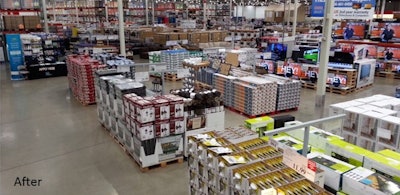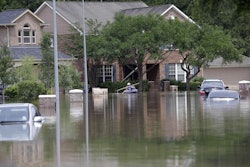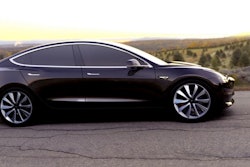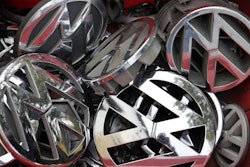
I
IMPO®
The State of Industrial
Facility Lighting:
Upgrading to LED
A look at what industrial facilities
currently use for their lighting
system, and how LED upgrades
have become commonplace.
Page: 2
The State of Industrial Facility Lighting:
Upgrading to LED
A look at what industrial facilities currently use for their lighting system, and
how LED upgrades have become commonplace.
As part of their efforts to become greener and leaner, manufacturing plants, warehouses, distribu-
tion centers, fabrication shops and other industrial operations have made their facility lighting part
of the equation. Industrial consumers are doing so through upgrading or replacing their existing
metal halide, fluorescent, and high pressure sodium light bulbs and fixtures with light emitting diode
(LED) bulbs. Commercial grade LED have proven to last significantly longer than legacy HID lighting
systems, offer superior light quality with consistent lumen maintenance at a fraction of the operating
cost of legacy systems, often with an ROI of less than one year in commercial applications.
According to the Department of Energy:
• Today’s LED bulbs can be six-to-seven times more energy efficient than conventional
incandescent lights and cut energy use by more than 80%.
• Quality LED bulbs have a life of 50,000 hours or more – lasting 5x longer than traditional light
bulbs. Those hours equal a life of more than 5.7 years if run 24 hours a day, seven days
a week.
• Unlike HID lamps – which release 90% of their energy as heat – LEDs use energy far more
efficiently with little wasted heat.
In March 2016, Industrial Maintenance and Plant Operation (IMPO) surveyed its audience about the
state of facility lighting. Questions aimed to discover readers’ level of satisfaction with their facility
lighting, what kind of lighting their facility uses, if they plan to upgrade in the near future, and if so,
if they plan to retrofit existing fixtures or replace them.
Overall, the results showed that a large portion of C-level industrial facilities managers plan to, or
at least want to, upgrade their current lighting solution.
A look at the before and after result of OEO Energy
Solutions’ “plug ‘n play” LED lighting system installation
at a Costco store.
Page: 3
Demographics
Survey respondents were comprised of manufacturing plant operators, facility managers, engineering personnel,
and plant maintenance supervisors.
Satisfaction
Asked how satisfied they are with the current state of the
lighting system in their industrial facility:
• 50.4% said they are satisfied
• 20.6% said they are very satisfied
• 29% said they are not satisfied
While the majority – 71% – are happy with their facility
lighting, that still means that nearly 3 out of every 10
respondents are not. That represents a big chunk of
industrial facilities due for an upgrade.
How Old?
Nearly 38 percent of respondents said their lighting
system was installed at least 10 years ago, 18.2% said
theirs was installed within the past 6-10 years, 25 % said
within the past 3-6 years, and 18.9% said within the past
1-3 years.
Upgrade Upcoming?
Asked if they are planning to make improvements to their lighting solution within the next 1-2 years,
38.5 % of respondents said yes, 43.1% said no, while 18.5% said they are currently in the process
of an upgrade. That means a majority – 57% – will have upgraded their system within the next 2 years.
Retrofit, or Replace?
Once the decision has been made to upgrade a
facility’s lighting, the next step is to choose between
retrofitting existing lighting fixtures, and replacing them
altogether. For large facilities, the cost of new fixtures
and their installation can become expensive fast.
Asked hypothetically if they were looking to upgrade –
would they prefer retrofitting or replacing, 57% of
respondents chose retrofitting.
Install Time
Downtime means money lost in the industrial and
manufacturing world. So whether via retrofit, or
replacement, the time needed to install a lighting
solution upgrade can be a big factor when choosing a
lighting vendor. Obviously, the quicker the better.
Asked how long they would expect a system installation
to take at their facility, or how long their current system
took to install:
• 49.6% said it took more than one week
• 13.7% said 5-7 days
• 20.6% said 3-5 days
• 16% said 1-2 days
How satisfied are you with the current state of
the lighting system in your manufacturing or
distribution facility?
Very Satisfied
Satisfied
Not Satisfied
20.6%
50.4%
29%
If you were looking to upgrade or have already
upgraded your lighting system, would you prefer
to retrofit your exiting fixtures to LED or entirely
replace them? (given the same performance for both)
Replace fixtures
Retrofit fixtures
43%
57%
Page: 4
Cost
The upside the upgrading a facility lighting system to LED is that the energy savings will pay off in the long run.
But of course, the downside is the upfront cost of installation, and the cost of the bulbs and/or new fixtures
themselves.
Asked what they would expect it to cost, including labor, per light changed to
retrofit a facility high bay fixture to LED:
• 38.7% said $100-150
• 22.7% said $150-200
• 16% said $200-300
• 10.1% said $300-400
• 12.6% said $400+
Asked the same for an LED full fixture replacement:
• 32.8% said $150-250
• 34.5% said $250-350
• 14.3% said $350-450
• 18.5% said $450-550
Asked what they think about their current facility lighting utility cost:
• 59.8% said it’s about what they’d expect
• 26.8% said it’s higher than expected
• 13.4% said it’s lower than expected
Energy Rebate
Everyone knows that upgrading to LED lighting will save on energy costs. But a lesser-known bonus of
upgrading is the opportunity to receive a rebate check from the utility company. Most electric utility companies
offer rebates to help pay for the cost of energy-reduction projects. Rebates can be substantial and can cover as
much as 75% of the cost of project, but going through the rebate qualification and application requirements can
be a chore. Thankfully, some lighting vendors offer rebate processing, offering financial consultants that will find,
pre-qualify, and process rebate applications. More than 72% of IMPO survey respondents said they would prefer
to have their lighting vendor offer rebate processing for them.
Overall, the IMPO survey showed that there is a considerable portion of industrial managers that would like to
see their facility lighting system upgraded, and that the vast majority of facilities are still running behind when
it comes to lighting energy efficiency. Driven primarily by popularity of “plug ‘n play”, direct-replacement LED’s
for use in existing 400W and 1000W metal halide and HPS fixtures, which do not require ballast bypass, fixture
change or electrician, the LED market is expected to grow significantly over the next few years. The 2016
Navigant Research Report Industrial and High-Bay Lighting: Global Market Analysis and Forecasts recognized the
direct-replacement segment as the catalyst in the adoption rate of commercial LED technology due to the
simplicity of installation and low upgrade investment. Over the next few years…they would prefer it.
Page: 5
About This Report
The information in this report was researched and produced by IMPO in conjunction with OEO Energy Solutions.
Statistical data was researched and compiled by Advantage Business Media in March 2016.
About OEO Energy Solutions
OEO Energy Solutions (www.OEO.com) offers patented, direct-replacement “plug ‘n play” LED “bulbs” designed to
replace existing 400W and 1,000W metal halide, high pressure sodium and T5 or T8 systems. OEO’s “plug ‘n play”
LED technology allows for use of existing warehouse or industrial-type lighting fixtures without any need to
rewire or replace those fixtures. OEO is recognized as a “Key Industry Player” in the 2016 Q1 Navigant Research
Report Industrial and High-Bay Lighting: Global Market Analysis and Forecasts.






















